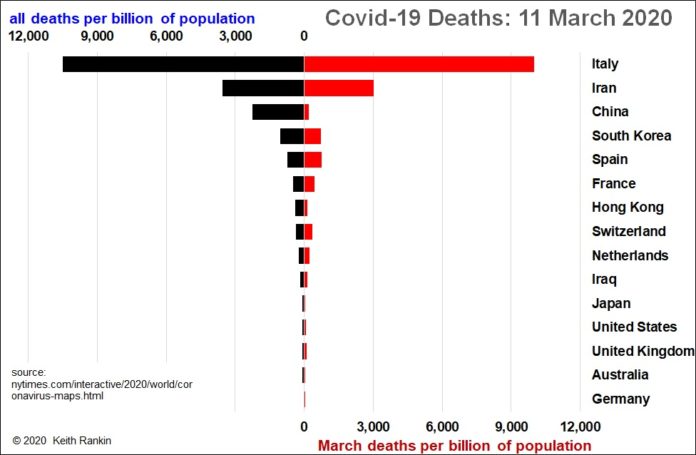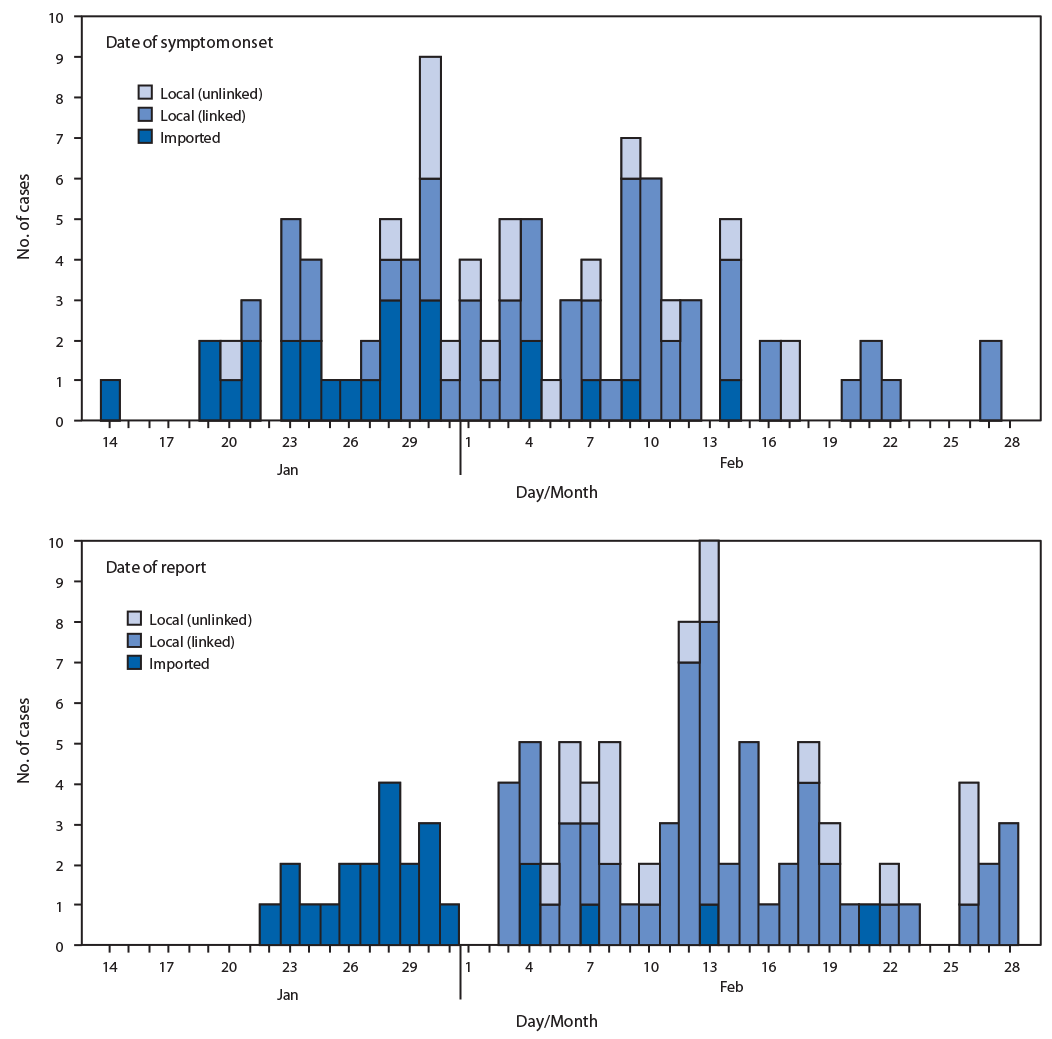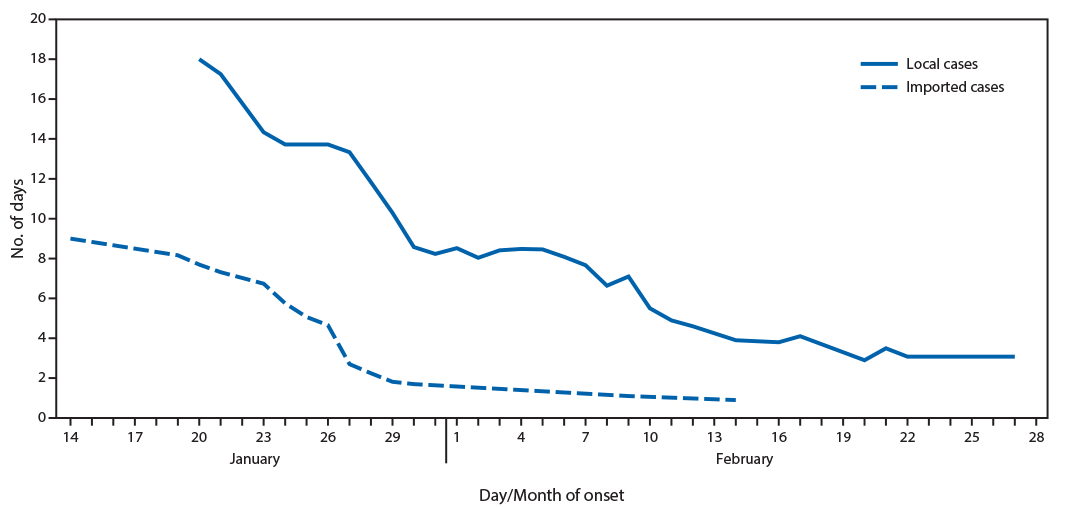A COVID-19 Pandemic is a pandemic of a COVID-19 disease.
References
2022
- (Wikipedia, 2022) ⇒ https://en.wikipedia.org/wiki/COVID-19_pandemic Retrieved:2022-11-11.
- The COVID-19 pandemic, also known as the coronavirus pandemic, is an ongoing global pandemic of coronavirus disease 2019 (COVID-19) caused by severe acute respiratory syndrome coronavirus 2 (SARS-CoV-2). The novel virus was first identified from an outbreak in Wuhan, China, in December 2019. Attempts to contain failed, allowing the virus to spread to other areas of Asia and later worldwide. The World Health Organization (WHO) declared the outbreak a public health emergency of international concern on 30 January 2020 and a pandemic on 11 March 2020. As of , the pandemic had caused more than cases and confirmed deaths, making it one of the deadliest in history.
COVID-19 symptoms range from undetectable to deadly, but most commonly include fever, dry cough, and fatigue. Severe illness is more likely in elderly patients and those with certain underlying medical conditions. COVID-19 transmits when people breathe in air contaminated by droplets and small airborne particles containing the virus. The risk of breathing these in is highest when people are in close proximity, but they can be inhaled over longer distances, particularly indoors. Transmission can also occur if contaminated fluids reach the eyes, nose or mouth, and, rarely, via contaminated surfaces. Infected persons are typically contagious for 10 days, and can spread the virus even if they do not develop symptoms. Mutations have produced many strains (variants) with varying degrees of infectivity and virulence. [1] COVID-19 vaccines have been approved and widely distributed in various countries since December 2020. According to a June 2022 study, COVID-19 vaccines prevented an additional 14.4 to 19.8 million deaths in 185 countries and territories from 8 December 2020 to 8 December 2021. Other recommended preventive measures include social distancing, wearing masks, improving ventilation and air filtration, and quarantining those who have been exposed or are symptomatic. Treatments include novel antiviral drugs and symptom control. Public health mitigation measures include travel restrictions, lockdowns, business restrictions and closures, workplace hazard controls, quarantines, testing systems, and tracing contacts of the infected, which, together with treatments, serve to bring about the control and eventual end of the pandemic. The pandemic has triggered severe social and economic disruption around the world, including the largest global recession since the Great Depression.[2] Widespread supply shortages, including food shortages, were caused by supply chain disruption. Reduced human activity saw an unprecedented pollution decrease. Educational institutions and public areas were partially or fully closed in many jurisdictions, and many events were cancelled or postponed during 2020 and 2021. Misinformation has circulated through social media and mass media, and political tensions have intensified. The pandemic has raised issues of racial and geographic discrimination, health equity, and the balance between public health imperatives and individual rights.
2020
2020b
2020c
2020d

|
Situation Dashboard Snapshot (2020-03-25)
=== 2020e ===
- (Ng et al., 2020) ⇒ Yixiang Ng, Zongbin Li, Yi Xian Chua, Wei Liang Chaw, Zheng Zhao, Benjamin Er, Rachael Pung, Calvin J. Chiew, David C. Lye, Derrick Heng, and Vernon J. Lee (2020). "Evaluation of the Effectiveness of Surveillance and Containment Measures for the First 100 Patients with COVID-19 in Singapore — January 2–February 29, 2020". MMWR Morb Mortal Wkly Rep. ePub: 13 March 2020. DOI:10.15585/mmwr.mm6911e1.
2020f
- (Ghinai et al., 2020) ⇒ Isaac Ghinai, Tristan D McPherson, Jennifer C Hunter, Hannah L Kirking, Demian Christiansen, Kiran Joshi, Rachel Rubin, Shirley Morales-Estrada, Stephanie R Black, Massimo Pacilli, Marielle J Fricchione, Rashmi K Chugh, Kelly A Walblay, N Seema Ahmed, William C Stoecker, Nausheen F Hasan, Deborah P Burdsall, Heather E Reese, Megan Wallace, Chen Wang, Darcie Moeller, Jacqueline Korpics, Shannon A Novosad, Isaac Benowitz, Max W Jacobs, Vishal S Dasari, Megan T Patel, Judy Kauerauf, E Matt Charles, Ngozi O Ezike, Victoria Chu, Claire M Midgley, Melissa A Rolfes, Susan I Gerber, Xiaoyan Lu, Stephen Lindstrom, Jennifer R Verani, Jennifer E Layden, and Illinois COVID-19 Investigation Team (2020). "First Known Person-To-Person Transmission Of Severe Acute Respiratory Syndrome Coronavirus 2 (SARS-CoV-2) In The USA" In: The Lancet Published:March 13, 2020. DOI:10.1016/S0140-6736(20)30607-3
- QUOTE: Coronavirus disease 2019 (COVID-19) is a disease caused by severe acute respiratory syndrome coronavirus 2 (SARS-CoV-2), first detected in China in December, 2019. In January, 2020, state, local, and federal public health agencies investigated the first case of COVID-19 in Illinois, USA (...)
Patient 1 is a female in her 60s who travelled to Wuhan on Dec 25, 2019, and returned to Illinois on Jan 13, 2020, and who was not symptomatic while travelling. In Wuhan, she visited a hospitalised relative regularly and visited other family members who had undiagnosed respiratory illnesses, one of whom was later hospitalised with viral pneumonia. No contacts had laboratory-confirmed COVID-19, but it is unknown whether any were tested for SARS-CoV-2.
On DOI 6, she sought care at an outpatient clinic for fever, fatigue, and cough and was hospitalised that day for pneumonia. She was reported to public health authorities as a PUI on DOI 7. Retrospectively, she reported that her symptoms, which also included nausea, abdominal discomfort, and dizziness, started as early as 6 days before admission (figure).

|
Figure Symptoms and results of rtPCR testing for SARS-CoV-2 by day of investigation.
2020g





